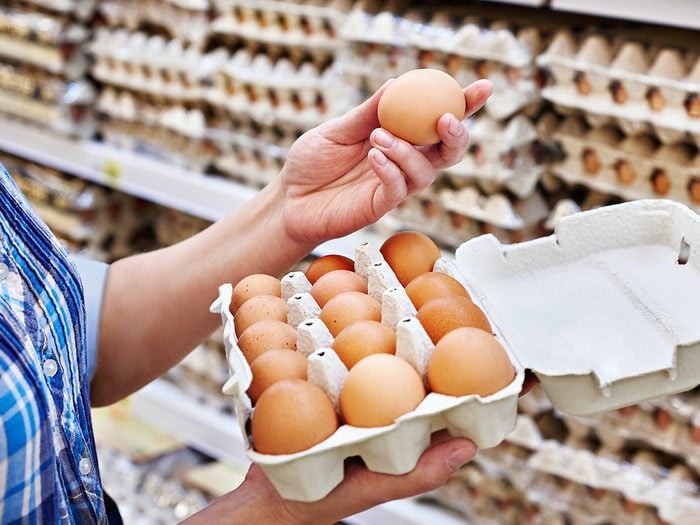If You See Spots or Bumps on Your Eggs, This Is What It Means

We’re here to crack the code before you crack your next egg.
When you open up an egg carton at the grocery store to inspect for cracks, you may notice that some eggs look a little different. Although we’re used to eggs having a nice smooth shell, others may have a spotted or bumpy shell. Does this influence your purchase, and if so, is there a good reason for being so discerning?
What does it actually mean when there are spots or bumps on an egg?
You may have noticed that some eggshells are discoloured with dark brown spots. This is known as a “speckled” egg. These dark splotches are created early in the process as the egg is travelling through the hen. As the egg passes through the oviduct (the organ that processes the yolk and adds the shell), it spins. If the egg spins too slowly as it moves along the tube, it can end up looking a little speckled.
You may also notice a bumpy egg or two in the carton you just brought home from the grocery store. The “bumps” just mean the eggshell has some texture to it rather than being completely smooth. This also occurs in the oviduct as the egg passes through the hen. There may just be some debris in the tube as the shell is being formed. Debris in the oviduct is more common in older hens or younger hens who don’t receive enough nutrients. When this happens, calcium is released which encloses the debris in the shell.
Here’s how to buy the best eggs at the supermarket.
Is it safe to eat speckled or bumpy eggs?
The short answer is yes.
There is certainly no need to discard any eggs with either of these physical abnormalities. The part that matters the most when it comes to egg safety is how you cook them, as the biggest fear surrounding egg safety is salmonella, a group of bacteria that causes food poisoning. While it may not necessarily be salmonella, look for black or green spots inside the eggshell. This may be a sign of bacteria or contamination.
First, make sure the eggs are kept in the refrigerator and use within three weeks of purchasing for the best quality. Even if you don’t see any dark colours inside the eggshell after you crack it, it’s important to keep everything clean. If you come in contact with raw egg while you are cooking, make sure to thoroughly wash your hands, utensils, and any surfaces the egg may have come into contact with. Also, make sure that the eggs are cooked until the yolks are firm.
The bottom line is, your bumpy and spotted eggs are perfectly safe to eat. Before you start whipping up breakfast, find out what to make with leftover egg whites.
Sources
- Mental Floss: “Why Do Eggshells Sometimes Have Weird Bumps and Spots?”
- FDA: “What You Need to Know About Egg Safety”
- Egg Safety: “Eggs – Inside and Out”
- Fresh Eggs Daily: “Why Does my Chicken Egg Look Weird?”
- Healthline: “Top 10 Health Benefits of Eating Eggs”






